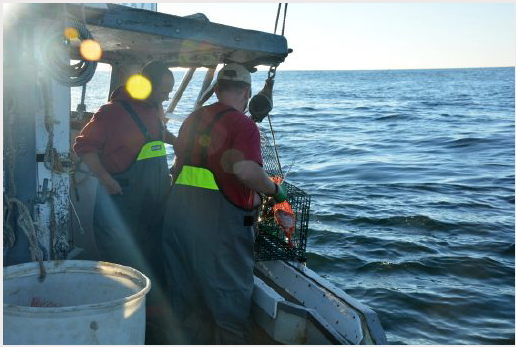It was December 2000, and both houses of Congress were itching to go home. They just needed to wrap up the budget — the new fiscal year was already 10 weeks old. At last, the House of Representatives announced that agreement had been reached.
There was only one problem. The Clinton administration was proposing restrictions on the billion-dollar Bering Sea pollock fishery, and the chairman of the Senate Appropriations Committee, Republican Ted Stevens of Alaska, was having none of it.
“The fishing limits,” he said, reportedly pounding on his desk, “will put a considerable number of people out of work. Federal control of these magnificent fisheries is not going to be approved by this senator.”
As the man who controlled the purse strings, Stevens, an iconic World War II veteran known to Alaskans as “Uncle Ted,” was arguably the country’s most powerful senator and couldn’t be ignored.
“We’ll work it out,” Sen. Harry Reid, the Democratic whip, told the president.
The pollock fishery faced a challenge analogous to and no less daunting than the one faced by the lobster industry today: healthy stocks sharing habitat with an endangered species.
And like lobstermen, the pollock fleet was being laid siege by environmental groups wielding the Endangered Species Act. Specifically, they asserted that the midwater trawl fleet that harvested pollock was depriving Steller’s sea lions of their primary food source.
Stevens got $80 million for research, and NOAA implemented “reasonable and prudent alternatives” that allowed the pollock fishery to continue in the meantime.
Unfortunately for the lobstermen, they have no Uncle Ted.
As such, a federal court ruling April 9 invalidating NOAA’s 2014 biological opinion on right whale interaction with lobster gear hangs like a sword of Damocles over the industry.
NOAA’s position is that vertical lines used by lobster catchers don’t jeopardize right whales. The plaintiffs argued that he agency failed to include an “incidental take statement” in its biological opinion, thereby violating both the Endangered Species Act and the Marine Mammal Protection Act.
In fact, NOAA addressed potential interaction and mortality, but maintained that because the ESA and the MMPA overlap, an ITS, as such, was not required.
Judge James E. Boasberg would have none of it, writing that NOAA’s “failure to include an ITS in its 2014 BiOp after finding that the American lobster fishery had the potential to harm the North Atlantic right whale at more than three times the sustainable rate is about as straightforward a violation of the ESA as they come.”
The facts make clear, however, that potential and likelihood are two different propositions.
In 1991, when NOAA’s original recovery plan was implemented, the right whale population was estimated to be just north of 250. Following implementation of vessel speed restrictions and shipping lane modifications, by 2010 the whale’s ranks were put at greater than 450. During the same period, the number of traps fished by Maine lobstermen increased from 2 million to 3 million. If lobstering were truly a threat to the right whale’s survival, it’s hard to explain the growth in the number of whales against a 50 percent increase in gear.
In fact, since 2002 there is but one documented case of a right whale entanglement in U.S. lobster gear.
Meanwhile, the right whale’s summer range has shifted northward into Canadian waters, likely as a result of warming in the Gulf of Maine, which explains the spike in Canadian mortalities. The Canadians have responded with vessel speed restrictions in waters where right whales have been observed.
The ESA honors what Abraham Lincoln called the better angels of our nature. But even if the ESA insists we take whatever steps are necessary to protect species, it doesn’t insist that we take steps that don’t.
In the case of the northern right whale, for example, it doesn’t allow us to say, “We don’t know, but let’s rule out lobstering.”
Not only is there is no evidence of right whale mortality as a result of interaction with lobster gear, its fairly clear that the two seldom share the same waters. In fact, we have seen that as the number of lobster traps in the Gulf of Maine increased, so did the number of whales.
In Alaska, scientists found that Steller’s sea lions liked herring and ate groundfish such as pollock as a last resort. Research also showed that predation by killer whales played a significant role in the decline of the sea lions.
Judge Boasberg has not yet settled on a remedy in this case. Rather than go down the road of mandating cumbersome, so-called weak links that don’t work half the time or expensive, high-tech gear such as submersible, radio-controlled lobster pot buoys, we must first see if such gear is needed.
NOAA should be tasked with determining exactly where gear entanglements are taking place, and with what kind of gear.
We’re not helping whales if we protect them from encounters that aren’t taking place.







